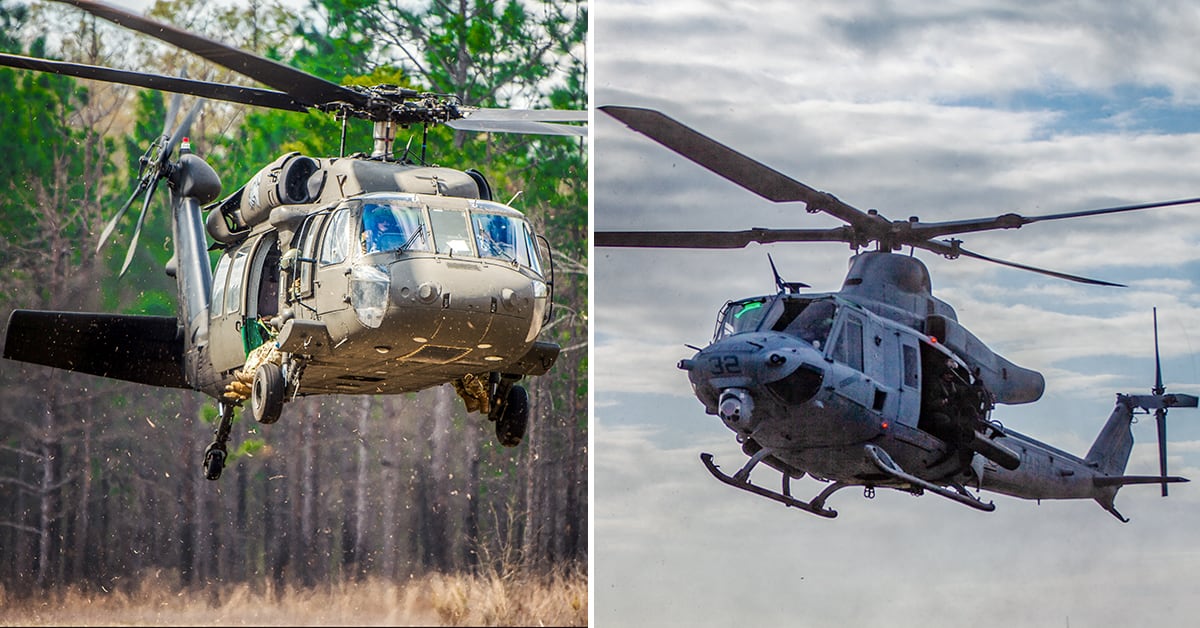The likely next Army chief of staff has made Guard aviators of the future a real part of the service’s next steps in combat aircraft.
Army Vice Chief of Staff Gen. James McConville said that the newest helicopter under development, which will replace many UH-60 Black Hawks and CH-47 Chinooks, will go not just to tip-of-the-spear units such as the 101st Airborne Division, 82nd Airborne Division and 160th Special Operations Aviation Regiment, but at the same time will arrive at “high priority” Army Guard units.
Speaking at the annual meeting of the Army Aviation Association of America, McConville estimated that the Future Long Range Assault Aircraft could field by 2028 to 2030, according information provided by Army Times’ sister publication Defense News.
RELATED

Simultaneously, the Army is developing a partial AH-64 Apache replacement, the Future Attack Reconnaissance Aircraft.
The FARA could also go to Army Guard units, McConville said.
Traditionally, advanced vehicles, armor, aviation and other big-ticket equipment fills out the active-duty units long before Guard and Reserve soldiers get their hands on it.
“When we look at what aviation does ... they find stuff and they kill stuff, that’s what they do,” McConville said in a round table with reporters following his remarks.
“The Apache is the most lethal helicopter in the world right now,” he said. “And we want to increase that capability moving forward."
The other thing aviation does, he said, is move things, whether that’s called air assault or mobility.
That’s where the FLRAA will come in, moving armed helos into places to support dismounted ground troops.
But Guard air isn’t the only one to see likely changes with the new aircraft. The four-star, himself a Master Army Aviator who has qualified on the Apache, AH-1 Cobra and OH-58 Kiowa Warrior, told attendees that the FARA will replace some Apaches in the Air Cavalry squadrons.
But it won’t replace all of the Apaches in the near term, he said.
“The FARA will replace some Apaches but not all,” he said. The remaining Apaches, which are continuing into their sixth major upgrade, now will be in the attack battalions “for some time into the future.”
Both aircraft when finished will also be incorporated into Marine Corps aviation units. The FLRAA is expected to replace the Marines’ UH-1Y Venom utility helicopter and the FARA would replace the AH-1Z Viper attack helicopter.
Current requirements that the Army, Marines and Special Operations Command units have asked industry for vary slightly, with the Marines demanding greater distances and speed as well as options for more firepower on the FLRAA.
The FLRAA and FARA could fly faster, have a wider combat radius and cut medical evacuation times in half.
The maximum speeds for the Venom and Black Hawk are about 180-190 miles per hour with a full payload. The FLRAA is expected to fly at 265 to 322 mph.
To meet new standards for long range medical evacuation of casualties with the “golden hour” of increased survival rates FLRAA would need to hit air speeds of about 287 miles per hour.
The Marines also want a gunship version in addition to the assault version. And in-flight refueling to increase their mission distances.
The Army timeline aims to have a contract by 2021, an aircraft flying by 2024 and a fielded aircraft by 2030 that will last into the 2080s, with modifications, of course.
In a roundtable with reporters following the April 16 conference, McConville said that a combination of the capabilities of the new programs they’re pursuing, along with increases in Long Range Precision Fires and Multi-Domain Operations Task Force experimentation, are helping reorganize how formations go to war.
— Jen Judson, Defense News land warfare reporter, contributed to this report.
Todd South has written about crime, courts, government and the military for multiple publications since 2004 and was named a 2014 Pulitzer finalist for a co-written project on witness intimidation. Todd is a Marine veteran of the Iraq War.





